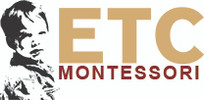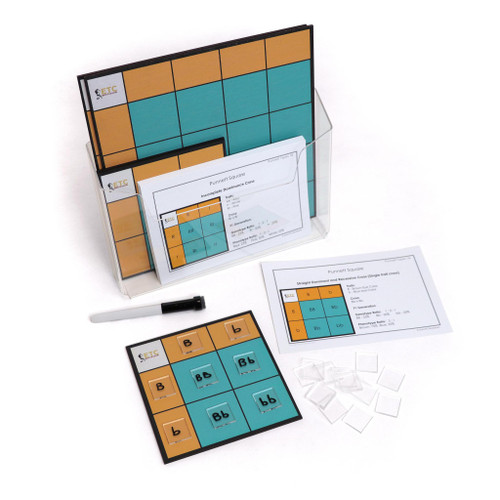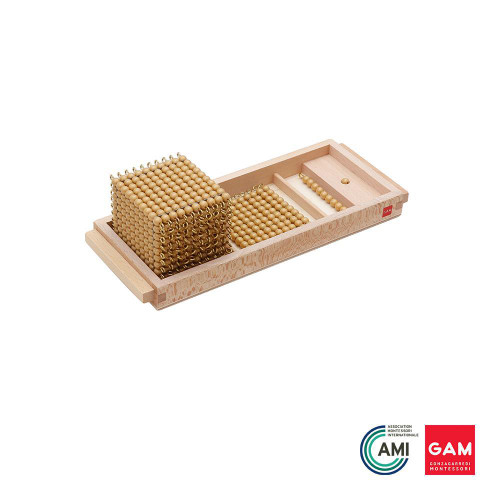Product Overview
- No Lamination Required.
- Printed on Premium Thick Plastic and Cut.
- This material is ready to start using. No other prep work is needed.
This exclusive ETC Montessori item is designed for students in the 12-15 level. Ideal for the Montessori Middle School environment. Fulfilling an area in science that up until now was virtually ignored in the Montessori classroom, teachers are now able to introduce students to advanced concepts without the need to fear the science behind the ideas. This kit includes everything needed to perform the work and meets an extensive list of standards that up until now have not been addressed.
How are traits passed on from one person to another, or from one generation to the following? These kinds of questions have been fascinating human beings for centuries. However, it’s only recently been that we have been able to fully understand some of the aspects relating to the genetic code and how characteristics are passed on to individuals from generation to generation.
It was the work of Gregor Mendel that shed the initial light into genetics. Today Mendel is considered as the father of genetics. Through his work with the common garden pea, he was able to develop a clear understanding of how traits were passed on. He was also able to show how one factor was able to completely mask the effects of a second factor. It was also Mendel that suggested that pairs of factors separated in the formation of reproductive cells, thus enabling the offspring to receive a set of factors from each parent.
The word factor has now been replaced, in modern genetics, with the word gene. However, it is the same principles that governed genes in Mendel’s time that still govern and determine the probabilities of an individual inheriting one gene or another. We can make these predictions through a device known as the Punnett square.
The sex cells, also known as gametes, are formed during a special type of cell division known as meiosis. During this process, the number of chromosomes in each cell is reduced by half. Through fertilization the full number of chromosomes is restored. Full of explorations, this material will allow students to make connections with cell division functions such as mitosis and meiosis.
Included in this kit:
- Two large wooden Punnett Boards for a dihybrid cross
- 3 small wooden Punnett Boards for monohybrid crosses.
- Acrylic tiles for marking alleles
- Velvet draw-string bag to hold the tiles
- Activity cards for explorations
- Dry erase marker with eraser
- Teacher's Notes with Scope and Sequence and Answer Key (Available Online Only)
- This kit contains enough material to allow up to 10 students to simultaneously work on the Punnett squares.
Students can explore concepts such as:
- Understand Mendelian Genetics from a historical point of view.
- Perform phenotypic and genotypic crosses
- Straight Dominant and Recessive Cross (Single trait cross)
- Incomplete Dominance Cross
- Co-dominance Cross
- Sex-linked Cross
- Multiple Alleles Cross
- Straight Dominant and Recessive Dihybrid Cross
- Sex Linked Dihybrid Cross
RESOURCES
Teacher's Notes and Answer Key. Available online only. Please download it at your convenience.
Complements the following items:
STANDARDS
View the Standards that are met through this material.
SUGGESTED CONTAINERS
1 ETC full page holder (for cards and boards)
VIDEOS
The following video shows what is included with the kit along with an overview of what you can teach.
The following video shows how to perform monohybrid homozygous test crosses and the probabilities associated with genotypes and phenotypes.
The following video shows how to perform monohybrid heterozygous test crosses and the probabilities associated with genotypes and phenotypes.
The following video shows how to perform dihybrid homozygous test crosses with two traits.
The following video shows how to perform dihybrid heterozygous test crosses with two traits.
















